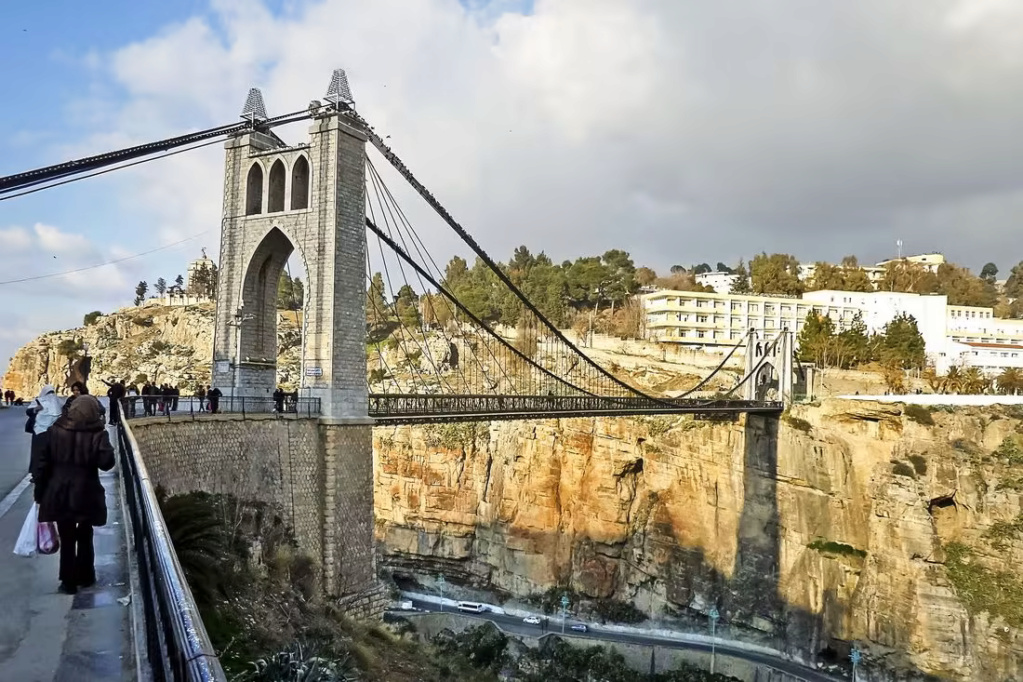Conservation and preservation of the city of Constantine, Algeria

The program of activities in Constantine was part of the intersectoral project “Sustainable management of world heritage for poverty reduction” launched in 2002, on the theme of eradicating poverty and extreme poverty in through the development and management of cultural resources.
Constantine, Algeria, is one of the oldest cities in the world. Founded by .The Numidians, and became under the name Cirta (Taseret, meaning the mill).the capital of the Numidian kingdom. Totally destroyed by Maxentius in 311 AD. BC, it was rebuilt shortly after by the Emperor Constantine who gave it his name. Constantine has preserved the historical evidence of three millennia of Numidian, Roman, Muslim, Ottoman and colonial presences. Its old town has been classified as Algerian national heritage since December 2004.

The cities of Constantine, Algeria , and Grenoble, France , have been twinned since 1999. Since 2002, they have been engaged in technical actions of decentralized cooperation which have expanded over the years to five aspects: institutional cooperation, economic development, civil society , youth and health. In 2003, a technical mission highlighted the need to add a new “heritage” component to decentralized cooperation between Grenoble and Constantine, and to concentrate its actions on the old town of Constantine, an exceptional heritage threatened with disappearance.
In January 2005, another mission made it possible to identify partners likely to carry out the “Heritage and fight against poverty” pilot project in Constantine. In addition to the Ministry of Foreign Affairs involved in the development of the project, the President of the Communal Popular Assembly of Constantine and the City of Grenoble have expressed their interest. The University of Rome III has established an urban conservation plan in conjunction with the Old Town Rehabilitation Unit. The Italian team carried out an inventory of the buildings of the old historic center and proposed a safeguard perimeter. Finally, the mission insisted on the urgent need to put in place in Constantine a territorial planning tool similar to the French SCoT (Territorial Coherence Scheme), so that new constructions on hillsides do not harm the landscape value. of this spectacular site and in order to improve connections between Constantine and the satellite towns.

Following the exchanges, work and missions carried out previously, in January 2006, a technical mission was organized jointly by the City of Grenoble and the World Heritage Center , within the framework of the France-UNESCO Convention , to evaluate the progress of the various components currently being implemented within the framework of decentralized cooperation. Concerning the “heritage” aspect, the municipal authorities have transmitted to the City of Grenoble the safeguarding plan produced by the University of Rome III.

The interest of this project was to raise awareness among authorities at different levels to take into account the value of heritage in actions initially focused on the economic, social and institutional environment.
Source : websites

The program of activities in Constantine was part of the intersectoral project “Sustainable management of world heritage for poverty reduction” launched in 2002, on the theme of eradicating poverty and extreme poverty in through the development and management of cultural resources.
Constantine, Algeria, is one of the oldest cities in the world. Founded by .The Numidians, and became under the name Cirta (Taseret, meaning the mill).the capital of the Numidian kingdom. Totally destroyed by Maxentius in 311 AD. BC, it was rebuilt shortly after by the Emperor Constantine who gave it his name. Constantine has preserved the historical evidence of three millennia of Numidian, Roman, Muslim, Ottoman and colonial presences. Its old town has been classified as Algerian national heritage since December 2004.

The cities of Constantine, Algeria , and Grenoble, France , have been twinned since 1999. Since 2002, they have been engaged in technical actions of decentralized cooperation which have expanded over the years to five aspects: institutional cooperation, economic development, civil society , youth and health. In 2003, a technical mission highlighted the need to add a new “heritage” component to decentralized cooperation between Grenoble and Constantine, and to concentrate its actions on the old town of Constantine, an exceptional heritage threatened with disappearance.
In January 2005, another mission made it possible to identify partners likely to carry out the “Heritage and fight against poverty” pilot project in Constantine. In addition to the Ministry of Foreign Affairs involved in the development of the project, the President of the Communal Popular Assembly of Constantine and the City of Grenoble have expressed their interest. The University of Rome III has established an urban conservation plan in conjunction with the Old Town Rehabilitation Unit. The Italian team carried out an inventory of the buildings of the old historic center and proposed a safeguard perimeter. Finally, the mission insisted on the urgent need to put in place in Constantine a territorial planning tool similar to the French SCoT (Territorial Coherence Scheme), so that new constructions on hillsides do not harm the landscape value. of this spectacular site and in order to improve connections between Constantine and the satellite towns.

Following the exchanges, work and missions carried out previously, in January 2006, a technical mission was organized jointly by the City of Grenoble and the World Heritage Center , within the framework of the France-UNESCO Convention , to evaluate the progress of the various components currently being implemented within the framework of decentralized cooperation. Concerning the “heritage” aspect, the municipal authorities have transmitted to the City of Grenoble the safeguarding plan produced by the University of Rome III.

The interest of this project was to raise awareness among authorities at different levels to take into account the value of heritage in actions initially focused on the economic, social and institutional environment.
Source : websites

